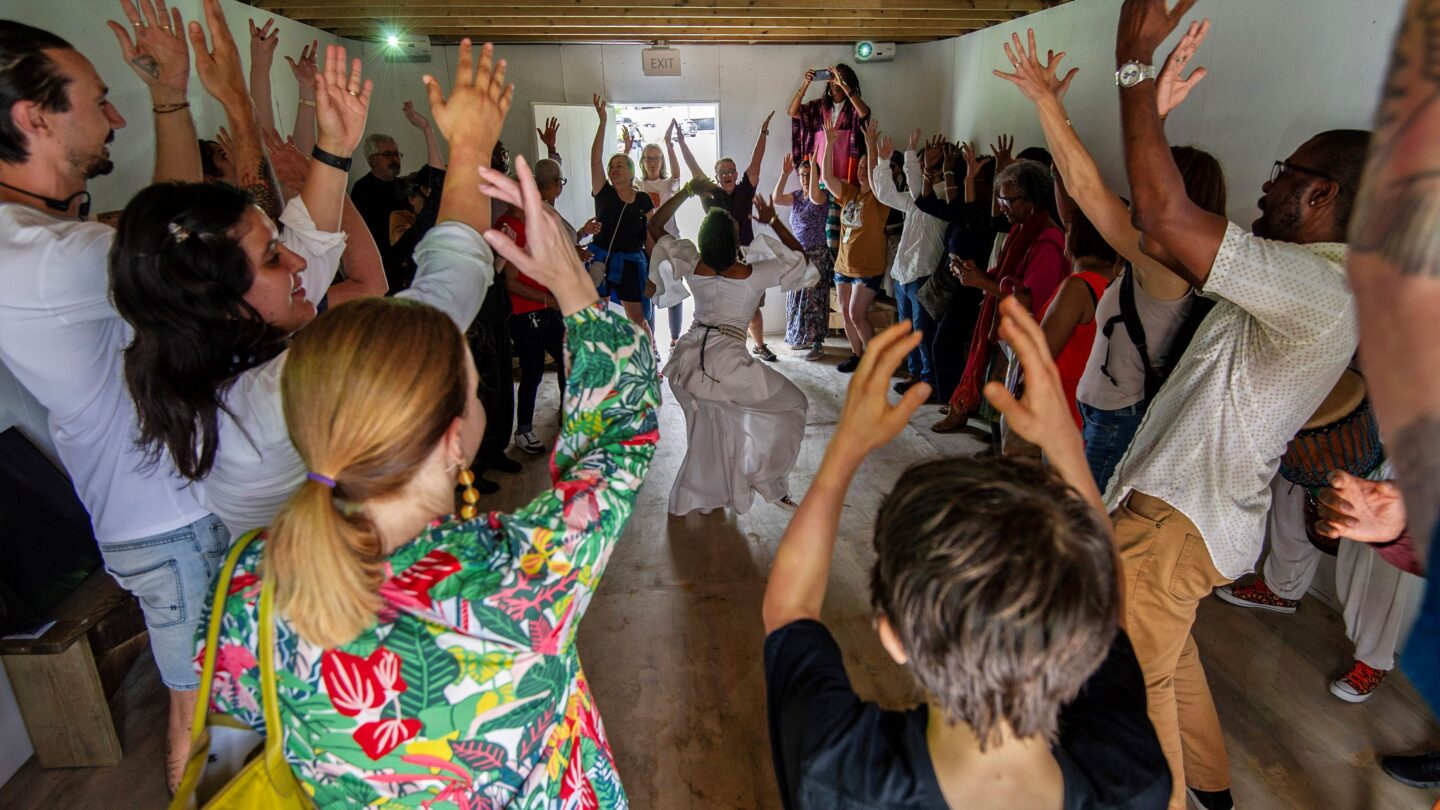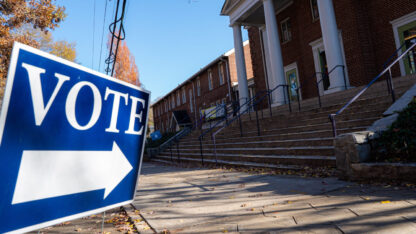Immersive Praise House art installation tells the story of Decatur's historic Beacon Hill neighborhood

A reconstruction of an African American praise house sits for now in the grassy field at the corner of Trinity Place and Commerce Drive.
Archival photographs of life in the historically Black Beacon Hill neighborhood are projected on the walls and recorded music evokes the combined hymn, prayer and dance that such buildings were meant for: the ring shout.
For the May 4 opening during the Decatur Arts Festival, visitors were invited by the lively drummers of Giwayen Mata to dance, clap and come on in.
“Our faith practice is always Black liberation theology. We know where we come from, and we know that we are free,” artist Charmaine Minniefield said.
The Beacon Hill community was the area of Decatur where freed slaves began to settle. The square mile area was the site of a thriving African American community of homes, businesses, churches and schools. In the early 20th century, the neighborhood became known as Beacon Hill, according to a city website.
“For decades, the Beacon area was considered by city officials to be a slum,” the city of Decatur’s website says. “Urban renewal, the process to buy, clear, and redevelop the area, began in the late 1930s. …Urban renewal expanded in the 1960s. Families and businesses were again displaced to make way for the Swanton Heights housing project and other public developments including the new Decatur High School, and the county courthouse.”
Minniefield says that inspiration for the public art project came partially from learning how to shout from her great-grandmother Ora Lee Fuqua, and partially from the experience of trying to trace Black history that has too often been ignored or erased. The Praise House is both art and history, both lively and solid, defying what Minniefield calls the “normalcy of erasure.”
Recently Minniefield served as the Stuart A. Rose artist-in-residence at Emory University, and the first iteration of the Praise House was built on the Emory campus last October. The project received funding from the National Endowment for the Arts, but funds to move it to Decatur were partially provided through fundraising and matched by DeKalb CEO Michael Thurmond’s office.
The Praise House was brought to Decatur to become part of the arts festival and other celebrations over the summer, and will remain in its present location until September 2024. After that, it will be moved again to south Atlanta where it will stand across the road from the historic Southview Cemetery. In each place, images of what life was like for Black people in that particular location are drawn from archives to become part of the art.
In the case of Beacon Hill, Minniefield says that the neighborhood began as a freedmen’s town after Emancipation. Images of life in Beacon Hill or “the Bottom” as it was also known, were provided by the DeKalb History Center and the City of Decatur.
The Praise House will be open on Fridays and Saturdays from noon-5 p.m. as well as during the city’s Juneteenth celebration and the Beacon Hill Pan African Festival.
Minniefield describes it as a place to gather and tell stories. An ongoing oral history project is also part of the project.
“I’m looking back in order to see forward,” Minniefield said.
This story was provided by WABE content partner Decaturish.








